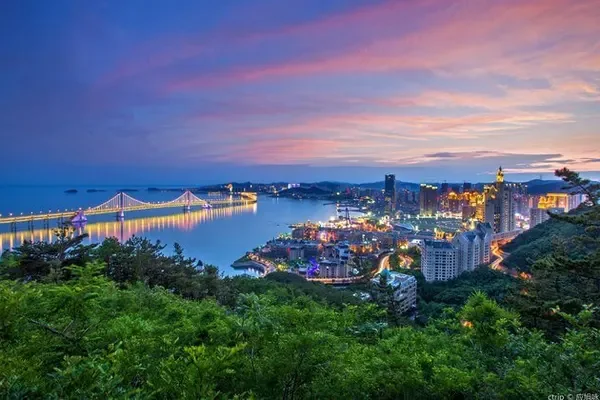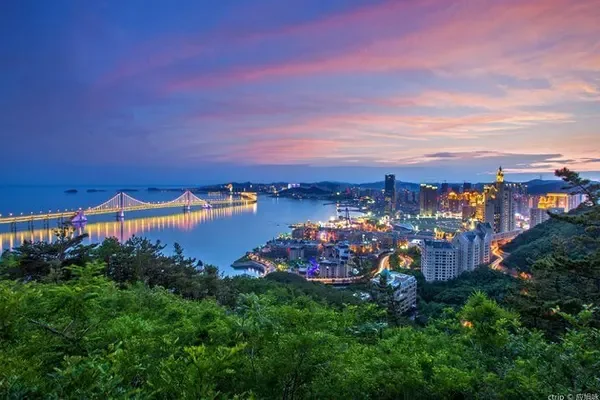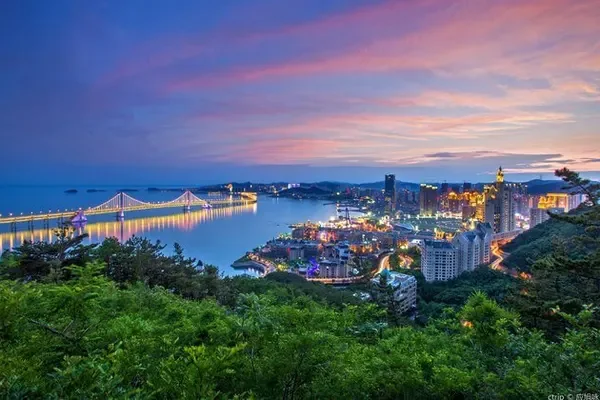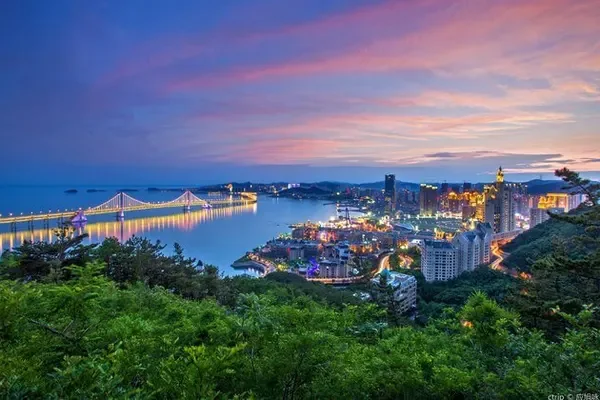On September 23, I returned to Jinan from Penglai yesterday and stayed at the "Quancheng Hotel". Today, the party broke up and everyone went their separate ways. I am going to Tangshan to commemorate my younger sister who died in the earthquake in 1976. I have recently engraved my name on the "Tangshan Earthquake Victims Memorial Wall". Take the G390 high-speed rail, starting from "Jinan West" at 8:20, because the locals repeatedly warned of the "morning peak" congestion, and "took a taxi" 2 hours in advance. However, the road was actually smooth, which should be thanks to the Mid-Autumn Festival , I was also impressed by the clean and tidy cityscape of Jinan.









Arriving in Tangshan at 10:32, I met my uncle, aunt, and younger brother as soon as I got off the train. They came from Beijing to pay homage to their sister, and the two trains happened to stop at the same platform. The main reason for staying in the "Railway Hotel" when leaving the station is to be close to "Tangshan Station", so that the two elders can rest nearby. The three of them in Beijing planned to return that night, and I planned to stay overnight, go to Tianjin tomorrow morning, and then transfer back to Xiamen.


Wang Haichen came to meet us at the hotel. He is a real "tourist expert": he once sailed a sailboat to explore Antarctica bravely; he also drove all eight roads into Tibet by himself. Poqi", has been to the no-man's land in northern Tibet, and visited the secret land of Medog in southern Tibet; he has also cycled through the Tengger Desert, Badain Jaran Desert, and entered Lop Nur many times; 24 days of self-driving in Inner Mongolia, Heilongjiang, Jilin, and Liaoning Borderline, 57-day self-driving Xinjiang borderline. In addition, he is also enthusiastic about public welfare. He once raised donations for the disabled elderly in the earthquake. He also helped the relatives of Tangshan earthquake victims who met by chance many times to find their relatives’ names on the "Earthquake Victims Memorial Wall" and assisted them to come to Tangshan to pay homage. It can be seen in local self-media reports in Tangshan.

My sister was able to engrave her name on the "Earthquake Victims Memorial Wall" only because of Wang Haichen's help. My younger sister is an educated youth in Beijing. During the Cultural Revolution, she joined the team in Shanxi, and then went to Sichuan Mining Institute (formerly Beijing Mining Institute) to study in the Department of Geology. After graduating in 1975, she returned to Shanxi. On July 28, 1976, he died in an earthquake at the age of 28. After the disaster, I went to Tangshan to search for it. Witnesses confirmed that my sister was killed, but no one knew where she was buried. This is a trauma that I have been unable to heal for many years.
In 2008, I learned that Tangshan built the "Earthquake Relics Memorial Park" and set up a "Earthquake Victims Memorial Wall" in the park. The names of every confirmed victim were engraved on the wall as a permanent memory. However, my younger sister is on a business trip, and no one in Tangshan can declare for her, so naturally there is no way to engrave her name. On July 28, 2016, the 40th anniversary of the Tangshan Earthquake, CCTV reported that General Secretary Xi personally went to the "Tangshan Earthquake Site Memorial Park" to lay a flower basket and bow three times to the "Earthquake Victims Memorial Wall". , Supplementary engraving of the missing names of the victims. The general secretary's speech made me hopeful. However, after searching online, I learned that "certification issued by the local administrative department" must be required for re-engraving the name. My sister’s original personnel relationship belonged to Shanxi Province, and her position was seconded to the Central Coal Department, and her actual work was to participate in the “Coal Field Exploration Battle” in Tangshan. After 40 years of “times have changed”, some of the above-mentioned units have been cancelled, which made me feel at all. I don't know where to find the "local administrative department" to issue a certificate, so re-engraving my name has become a wish that seems difficult to achieve.
The turning point came in the summer of 2017. One of my cousins, Chen X.N., met Wang Haichen at a meeting in Chengdu, and asked him to try to engrave his sister’s name. Wang Haichen immediately stated that this was "a bounden duty for Tangshan people." So, relying on the train ticket refund certificate issued to my sister by the "Coalfield Exploration Battle Command" in my hand, and the letter returned from Tangshan after the earthquake was stamped with "People's Armed Forces Department of the First Geophysical Exploration Team of Tangshan Coalfield Geological Exploration Company" On the official seal, "This comrade died in the earthquake, please return to the original place." After many rounds of dealings and communication, Wang Haichen finally persuaded the relevant departments to engrave his sister's name on the "memorial wall", making the seemingly impossible thing finally become a reality. possible. After learning about the success of the incident, Wang Haichen specially prepared a flower basket and rushed to the scene to verify and pay homage. He called my cousin Chen X.N. to report the situation at the first time, and even found a climbing device to paste a flower next to the engraved name of my sister to express my nostalgia. White chrysanthemums. Earthquakes are merciless, and the Haichen brothers are righteous, kind, and enthusiastic. A public welfare reporter who happened to be at the scene was deeply moved and wrote a special report to record all this touching.





Wang Haichen originally planned to drive to "Lop Nur" this morning, but in order to receive us, he deliberately postponed the departure time. He also enthusiastically invited several friends who had worked hard to engrave his sister's name to meet for lunch on his behalf. During the meeting, we raised our glasses to thank the people of Tangshan for their profound friendship. Friends in Tangshan also said that they received support from the whole country for the earthquake, and it is only natural to serve us now, not to mention that my sister sacrificed for the construction of Tangshan. My uncle is an old soldier, and my friends in Tangshan also have descendants of soldiers, so the conversation became more affectionate.



After dinner, go to the "Tangshan Earthquake Site Memorial Park". This park is based on the reconstruction of the earthquake site of the original Tangshan Locomotive and Rolling Stock Factory. The three-span factory building of the original steel casting workshop is still upright except for some middle columns, and all the surrounding wall columns have collapsed. The reinforced concrete The buildings were destroyed like this, which shows the tragedy of the disaster.





The "Earthquake Victims Memorial Wall" has a total length of about 500 meters. It consists of 13 walls in five groups. The black stone walls are engraved with the names of more than 240,000 earthquake victims in gold letters. The height of the wall is designed to be 7.28 meters, representing July 28. There is also a memorial avenue parallel to the memorial wall, with a width of 19.76 meters, implying 1976. These two sets of figures remind people to always remember the decree of July 28, 1976. days of mourning.

Wang Haichen led us to the place where my sister engraved her name. The accompanying "Gu Gan" was a part-time reporter who took pictures of us along the way. Wang Haichen said that the engraved names of the victims are still being added, and now there are many newly verified and engraved names under the sister's name. The two elders led us to mourn in silence and bow three times under the name of my sister. My aunt delivered a eulogy on behalf of everyone, expressing our longing for my sister over the years and the relief that we can finally engrave my name on the memorial wall. Brother Haichen has been by our side all the time, and they also joined us in silent tribute to our sister.





The "Earthquake Relics Memorial Park" started construction in April 2008 and was preliminarily completed and opened in July. Forest area, Memorial Square and Earthquake Museum and other areas. Among them, a pool of clear water in the "Memorial Water Area" is side by side with the "Memorial Wall". There is a group of stone sculptures in the shape of huge stones scattered around the water, using realistic sculpture language to describe the damage caused by the earthquake that year. Surrounding the giant stone sculpture are several groups of bronze portraits, vividly and accurately recreating the scenes of Tangshan people sharing weal and woe and supporting each other in the face of disasters.






The "Earthquake Museum" displays the huge disaster caused by the Tangshan Earthquake and the great feats of Tangshan people's earthquake relief and reconstruction of their homes after the earthquake. The museum also solemnly displays the flowers that General Secretary Xi Jinping came to pay homage to on July 28, 2016. Blue, the ribbon of the flower basket is the original, and the flowers should be updated in real time.




At 16:00, I left the "Memorial Park" and drove to the place where my sister died that year to pay my respects. When my sister came to Tangshan in 1976, she lived in the "Kailuan Coal Mine Geological Team Guest House". Wang Haichen learned after many investigations that the original site of the guest house was the area where the "Bank of Communications (Tangshan Branch)" is now located. So, we followed Wang Haichen to the "Bank of Communications Building". I had been to this place shortly after the earthquake. However, the memory of the past and the scene at this moment are completely inconsistent. The large area of earthquake ruins of that year is now a bank building. , a residential area, and a stainless steel sculpture among the green trees. Wang Haichen doesn't know what the meaning of the sculpture is, but in my opinion, it is the symbol of the place where his sister died.


Wang Haichen broke up with us here. He is busy organizing an expedition into Lop Nur on foot. He was scheduled to start this morning. He will explore and arrange hiking routes for the team in advance. Because of our arrival, the departure time is delayed, and now he has to catch up. Go home to pack your bags, and then drive on the road immediately.
"Gu Gan" drove us back to the hotel, and he came again in the evening to send my uncle and others to "Tangshan North Station". My uncle took the high-speed rail back to Beijing and boarded at "North Station" at around 10 p.m., which is more than 20 kilometers away from the urban area. "Gugan" was worried that it would be inconvenient to take a taxi at night, so he insisted on driving himself to see him off. After everyone left, I was the only one left in the room. Outside the window was the beautiful night view of "Tangshan Station". Looking back on the enthusiasm of the Tangshan people I met that day, I was deeply touched.

On September 24th, I will take the G8918 high-speed rail today, departing from "Tangshan Station" at 7:56 to Tianjin, and then transfer back to Xiamen. The free breakfast at the "Railway Hotel" starts at 7:00. After eating in a hurry, we rush to the station, pass the security check, and enter the waiting hall. G8918 has already started ticket checking.

Arrive in Tianjin at 8:35 and stop at "Tianjin Station". Yin X.L. and her husband Lao L. greeted her at the north gate of the station. My flight back to Xiamen (MF867) took off from "Binhai Airport" at 13:55. After deducting the check-in reservation and the time necessary for transportation in Tianjin, it is roughly estimated that there are still three hours to go around Tianjin. Yin X.L. is my former student, and I attended the Shandong gathering together a few days ago. Her husband, Lao L., is a Japanese translator and has now retired. This is the first time I have met her. Lao L. is a very enthusiastic person. When he learned that I was going to pass through Tianjin, he tailored a "three-hour tour of Tianjin" plan for me. He was both the "host" and the "tour guide". I am very sorry for the drag box.
Follow Lao L. Take Metro Line 2 at "Tianjin Station (North Gate)" and go to the "Southeast Corner" for two stops. After getting off the bus, transfer to the bus. First, you will come to the "King Kong Bridge" for sightseeing. The "King Kong Bridge" spans the Haihe River and has two decks. The lower deck is for both vehicles and pedestrians, and the upper deck is dedicated to traffic. This bridge has a long history. It was first built in 1903 and has been rebuilt many times. The existing rainbow-shaped double-layer arch bridge was built in 1996. We stand on the bridge and look out, and there is a tall Ferris wheel opposite, which is the famous "Tianjin Eye".




Below the Ferris wheel is the confluence area of South Canal, North Canal, Ziya River and Haihe River. Among them, the intersection of South Canal and Haihe River is called "Sanchakou". Lao L. said: "Sanchakou" connects the Beijing-Hangzhou Grand Canal with the Bohai Sea, and was an ancient water transportation hub. "Sanchakou" is also the birthplace of the entire city of Tianjin. The earliest "Tianjin" was centered on Sanchakou, and gradually expanded and developed. Therefore, there is an old saying in Tianjin, which is called "First there is Sanchakou, and then there is Tianjin Wei".


There is a "Monument of Luanluan into Tianjin Project" at the mouth of the Sancha River. Lao L. said that Tianjin used to be flooded by sea tides and the drinking water was bitter. From then on, I drank the clear Luan River water. This stele was erected for the builders of the project, and the nine characters on the stele are in Deng Xiaoping's handwriting.

9:35 Leave the "King Kong Bridge" and walk south along the Haihe River to Tianjin Ancient Culture Street. The "Haihe River System" is the largest water system in North China. It consists of the "mainstream of the Haihe River" and its five upstream tributaries (North Canal, Yongding River, Daqing River, Ziya River, and South Canal). The "Main Stream of the Haihe River" starts from "Sanchakou" to "Dagukou" and enters Bohai Bay. The total length is only 76 kilometers. The river section of the "Bridge" has been developed into the "Scenic Belt of the Haihe River". This section of the river flows through the most prosperous area in Tianjin. There are many high-rise buildings on both sides of the river. There are also many cultural relics, riverside parks, and yachts. Touring the Haihe River by boat has become a famous tourist brand in Tianjin. While walking, I saw a gray brick building with European classical style. Lao L. introduced it as "Wanghailou Church". It was the first church built after Catholicism was introduced to Tianjin. It was rebuilt and is now a national key cultural relic protection unit.




We also see an interesting phenomenon here. At the two ends of a bridge, a small group of "do-gooders" are chanting scriptures and releasing live fish. However, there are also many "fishermen" gathered around them. , some people fished, some people fished with nets, and everyone gained a lot. Those who do good deeds have a peaceful mind and turn a blind eye to this situation. I release the life, you catch the fish, and we live in peace with each other.




9:54 Walking to the "Yuhuang Pavilion", even if you have entered the ancient cultural block of "Jinmen Hometown". Lao L. told me that the earliest ancient city of Tianjin was located at this location, and now it has been transformed and developed into a tourist attraction. In front of you is a large antique commercial pedestrian street, with antique houses on the roadside. Many local famous and time-honored shops in Tianjin are set up here. There are various folk handicrafts, authentic Tianjin delicacies, and tourism such as Tianhou Palace. sights. However, because I don't have much time, I can only "watch the flowers on horseback", and only "Clay Figurine Zhang" allows me to stop for a long time. The clay sculptures displayed and sold here are all exquisite in workmanship, but they are also expensive. Clay sculptures with a height of one foot can be priced at over 10,000 yuan.









Tasting Tianjin steamed buns for lunch, Lao L. said that "Goubuli" is crowded with people, and it is a place of admiration for outsiders. In fact, "Goubuli" is not the only time-honored steamed stuffed bun shop in Tianjin. He wants to take me to a It is a place where Tianjin locals eat buns. The quality is not inferior to "Goubuli", but the dining environment is much more relaxed. So, at 10:37, we came to the "Old Yongsheng Baozi Shop" located on the outskirts of the Antique Commercial Pedestrian Street. Sure enough, there were not many customers in the shop. We ordered buns, beer, egg soup, and two small dishes. There are several flavors of steamed stuffed buns, and "Tianjin steamed stuffed buns" really lived up to its reputation, and I was very satisfied with it.




I left Baozipu at 11:20, walked to the "Southeast Corner" and took Metro Line 2, and arrived at Terminal T2 of "Binhai Airport" shortly after 12:00. Yin X.L. and his wife took me to the airport security checkpoint. Because it was the Mid-Autumn Festival, they gave me a box of "Tianjin Mooncakes" when we parted. This time, because of their reception, it only took about three hours to complete the "Tianjin Tour" efficiently: I saw the famous King Kong Bridge, Tianjin Eye, Wanghailou Church and the birthplace of Tianjin "Sanchakou", and visited the Haihe River The scenery, Tianjin Ancient Culture Street, and the most authentic Tianjin steamed stuffed buns, I feel that I really echoed the old saying, "Go out and rely on friends!".
I boarded the plane at 13:30 and took off on time. The weather outside the window was fine, and the thick clouds were like pure white cotton, clusters and clusters, passing by my eyes continuously. The shape of the clouds is also unpredictable. Up close, it looks like a coral reef in the sea, and from a distance, it looks like a vast snowfield and snow-capped mountains. My seat is by the window, and I just sit around and have nothing to do.









It began to descend through the clouds around 16:00, and flew over Longhai City (belonging to Zhangzhou) at 16:15, and the "Jiulong River" can be seen below. Then fly to "Xiamen Bay" and fly over "Haimen Island" at 6:19. There is a highway from Xiamen across Haimen Island to "Zhangzhou Port". At 16:20, fly over an isolated island on the sea, and have a bird's-eye view of an old hen in flight. It is "Chicken Island", the Egret Nature Reserve in Xiamen City, overlooking the other side of "Xiamen Bay", and you can also see the whole picture of "Zhangzhou Port".






The plane turned to the left with a big bend close to 180°, and flew over the Haicang District of Xiamen City at 16:21, and the "Gulangyu Island" can be seen not far from the right, and the "World Trade Twin Towers" are farther away Towering, not far from the "tower" is "Xiamen University". It flew over the Huli District of Xiamen City at 16:23 and landed at "Gaoqi Airport" at 16:26. After claiming the luggage, I left the station through the T3 terminal. My son picked me up by car and returned home around 17:00, just in time for the family's Mid-Autumn Festival gathering. Xiamen people have to "bo cake" during the Mid-Autumn Festival. This is the custom left by Zheng Chenggong's troops in Xiamen. This year, my family also has a special "reunion" and "a lot of people" gather together.












